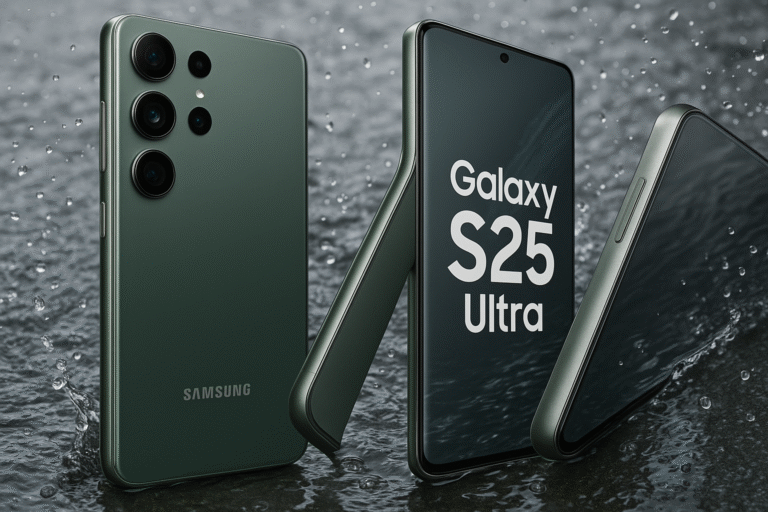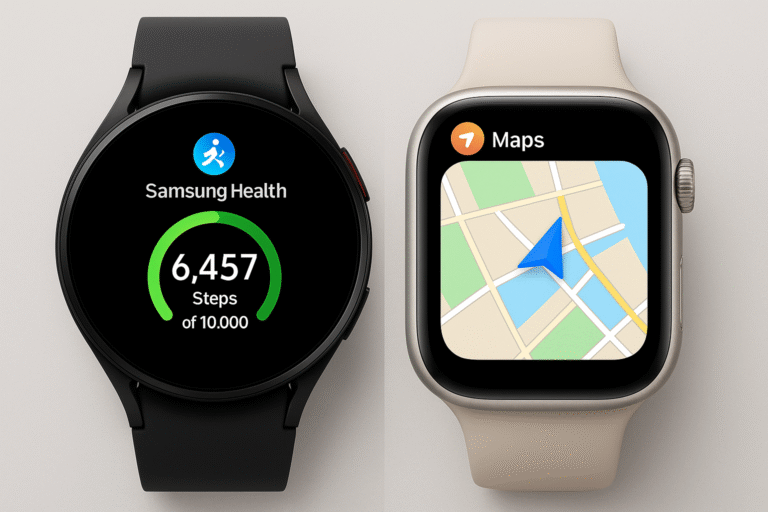OnePlus 13 vs Samsung S25: The Ultimate 2025 Flagship Battle
OnePlus 13 vs Samsung S25: Which Flagship Reigns Supreme in 2025?
2025 is shaping up to be a big year for smartphones, with the Samsung S25 and OnePlus 13 leading the charge. Both phones promise top-tier specs, refined designs, and powerful cameras — but which one truly deserves your attention? In this in-depth comparison, we’ll break down everything from design and performance to camera quality and pricing to help you decide whether the Samsung S25 or the OnePlus 13 is the right choice for you.
As Samsung continues to refine its premium Galaxy S lineup, the Samsung S25 arrives with subtle yet meaningful upgrades, including a brighter display, improved AI-powered photography, and longer software support. On the other hand, OnePlus is pushing hard with the OnePlus 13, doubling down on speed, clean design, and value — all without compromising on premium features.
Whether you’re upgrading from a previous flagship or choosing between the two for the first time, this guide will highlight the most important differences that matter in real-world use. From the stunning AMOLED displays to the power of Snapdragon chipsets, here’s how these 2025 Android giants compare.
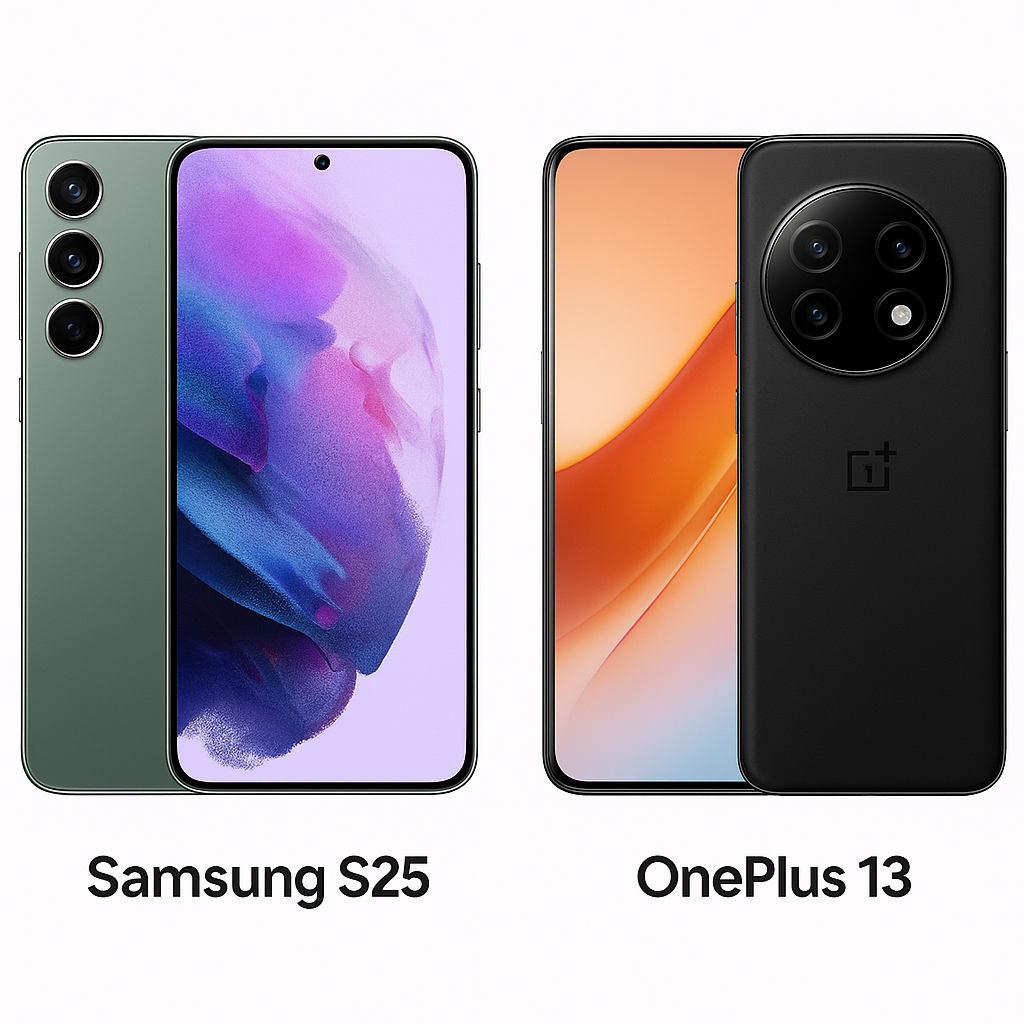
OnePlus 13 vs Samsung S25: Which Flagship Reigns Supreme in 2025?
The battle between the OnePlus 13 and the Samsung S25 is one of the most anticipated comparisons of 2025. With both brands known for delivering cutting-edge Android smartphones, users are wondering: which one offers more value, power, and innovation? In this post, we compare the two flagships across key categories to help you choose the right phone — with a focus on the Samsung S25.
Design & Build
The Samsung S25 refines its design with slimmer bezels, a stronger titanium frame, and a more comfortable grip. It feels premium in hand and is built to last. On the other side, the OnePlus 13 keeps things minimal, featuring a curved glass back and a clean finish. While both phones feel high-end, Samsung’s use of titanium gives it a slight edge in durability.
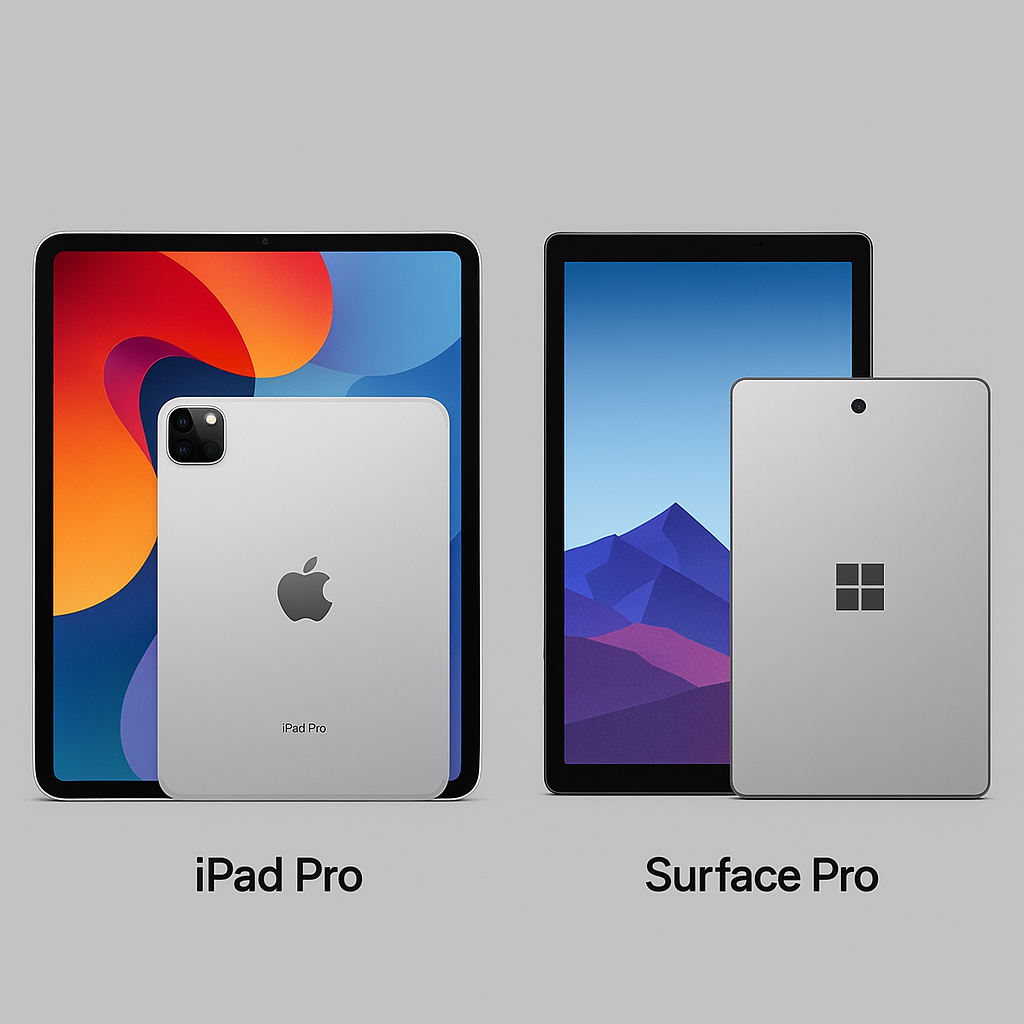
Display Quality
Samsung continues to lead in display tech. The Samsung S25 sports a stunning 6.8-inch QHD+ AMOLED panel with a dynamic 120Hz refresh rate, brighter peak brightness, and better HDR performance. The OnePlus 13 features a similar 120Hz AMOLED panel, but with slightly lower peak brightness and fewer color tuning options. Both are great, but Samsung wins on display quality.
Performance & Speed
Both phones are powered by the next-gen Snapdragon 8 Gen 4 chip, delivering blazing-fast speeds, AI enhancements, and efficient multitasking. The OnePlus 13 is known for being fast and lightweight due to its clean OxygenOS, while the Samsung S25 pairs power with rich features thanks to One UI.
In benchmarks, performance is nearly identical, but real-world use may favor OnePlus for responsiveness and Samsung for features.
Camera Capabilities
The Samsung S25 brings upgraded sensors, improved night mode, and powerful zoom capabilities. It excels in low-light photography and video stabilization. The OnePlus 13 continues its partnership with Hasselblad, delivering true-to-life colors and sharp portraits. However, Samsung takes the lead in versatility and overall image quality.
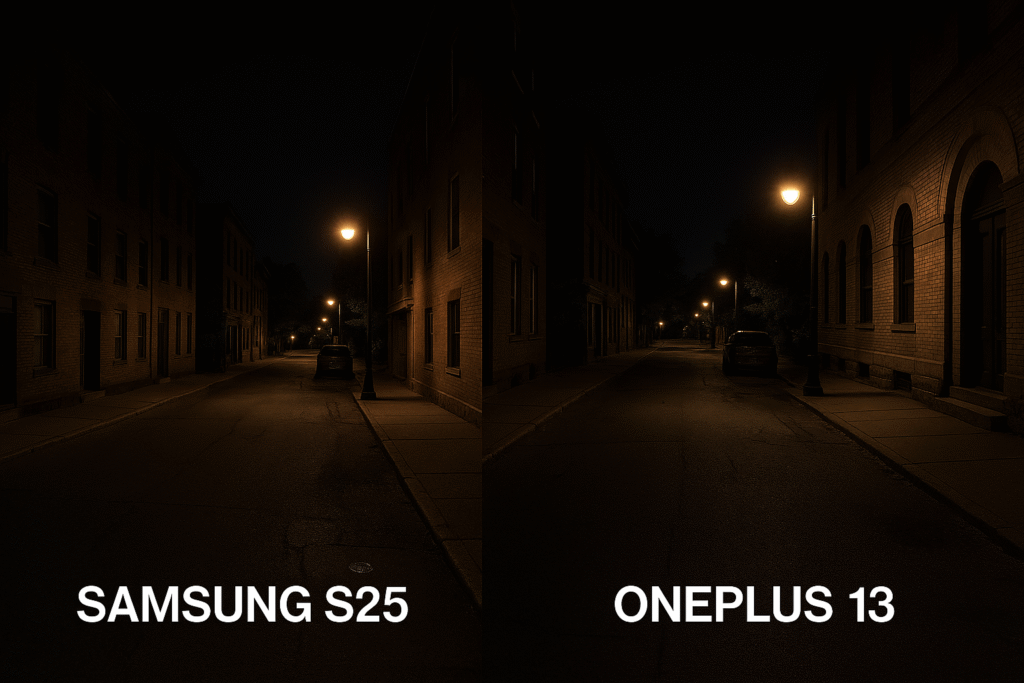
Battery Life & Charging
The OnePlus 13 typically charges faster, supporting 100W wired charging, while the Samsung S25 offers 45W charging and more efficient wireless options. Battery life is comparable, but Samsung’s power optimization and better standby time give it a slight edge in long-term use.
Software & Updates
Samsung offers One UI 7 with long-term update commitments — up to 5 years. The Samsung S25 is more integrated into the Galaxy ecosystem (tablets, watches, and laptops). OnePlus 13 runs OxygenOS 15, known for speed and simplicity, but may not match Samsung’s ecosystem or support longevity.
Price & Value
The OnePlus 13 is expected to undercut the Samsung S25 in price by around $100–$200 depending on region and variant. If budget matters, OnePlus is compelling. However, for those seeking the most polished, future-proof flagship, the Samsung S25 justifies its premium price.
Final Verdict
Both the Samsung S25 and OnePlus 13 are excellent flagships in 2025. The Samsung S25 stands out with a better display, longer software support, and superior camera versatility. The OnePlus 13 offers incredible speed, clean software, and great value.
If you’re choosing based on performance and price alone, the OnePlus 13 is a winner. But if you’re after a complete premium experience, the Samsung S25 reigns supreme.
Samsung S25 Design and Display: Sleek, Durable, and Eye-Catching
When it comes to design and display, the Samsung S25 is a standout in the competitive smartphone market. With a focus on elegance, durability, and functionality, Samsung has once again raised the bar for smartphone aesthetics and usability. Whether you’re looking for a sleek device that feels premium in hand or a display that offers an immersive experience, the Samsung S25 delivers on all fronts.
Sleek Design: A Premium Feel
The Samsung S25 features a sleek, modern design that blends sophistication with practicality. The device is crafted with high-quality materials, including a glass back and a metal frame, providing a premium finish that is comfortable to hold. Its slim profile makes it easy to slip into your pocket, while the curved edges give it a smooth, ergonomic feel.
With its clean lines and minimalistic aesthetic, the Samsung S25 embodies the brand’s commitment to both style and functionality. Available in multiple colors, including stunning metallic finishes, this phone is designed to turn heads without sacrificing durability.
Durable Build: Built to Last
Durability is a key feature of the Samsung S25, especially with its IP68 rating for water and dust resistance. Whether you’re caught in the rain or accidentally spill some water on the phone, the Samsung S25 is designed to withstand the elements. The reinforced glass on the front and back ensures that the device is less prone to scratches, while the sturdy metal frame adds an extra layer of protection against drops and impacts.
Samsung has also incorporated Corning’s Gorilla Glass Victus, which helps protect the screen from everyday wear and tear. This means the Samsung S25 can withstand accidental bumps and scratches without compromising its visual appeal or structural integrity.
Eye-Catching Display: Stunning Clarity and Color
The Samsung S25 doesn’t just look good; it also boasts a stunning display that’s perfect for watching videos, playing games, or browsing the web. Equipped with a Dynamic AMOLED 2X display, the Samsung S25 offers vibrant colors, deep blacks, and sharp contrast, making everything on screen pop with life-like detail. The display is capable of reaching high peak brightness levels, ensuring excellent visibility even under direct sunlight.
With a refresh rate of up to 120Hz, the Samsung S25 provides smooth scrolling and an overall fluid user experience. Whether you’re gaming or navigating through apps, every interaction feels seamless and responsive.
In summary, the Samsung S25 combines sleek aesthetics with unmatched durability and an eye-catching display. Whether you’re drawn to its premium design, confident in its long-lasting build, or captivated by the vivid and smooth display, the Samsung S25 offers an all-around outstanding experience. With its focus on both beauty and practicality, the Samsung S25 is a smartphone that excels in both form and function.
OnePlus 13 Design and Display: Minimalist Meets Premium
The OnePlus 13 offers a perfect blend of minimalist design and premium features, setting the bar high for modern smartphones. With its understated elegance and sophisticated display, the OnePlus 13 is a device that appeals to those who value both style and functionality. Whether you’re drawn to its clean design or captivated by its vibrant screen, the OnePlus 13 is built to impress.
Minimalist Design: Simplicity with Sophistication
One of the standout features of the OnePlus 13 is its minimalist design. With a focus on simplicity, the phone boasts a sleek, clean aesthetic that looks and feels premium. The flat-edged design gives the device a modern, refined look, while the smooth glass back enhances its elegance. The slim profile ensures the phone is comfortable to hold, while the premium materials—such as frosted glass and polished metal—add to its overall refined appearance.
The OnePlus 13 is available in a variety of sophisticated colors, allowing users to choose a shade that best fits their style. Whether it’s a classic matte finish or a striking glossy hue, the device’s minimalist design ensures that it stands out without being flashy.
Premium Build Quality: Designed for Durability
While the OnePlus 13 excels in design, it doesn’t compromise on durability. The device is crafted with high-quality materials, ensuring it can withstand the wear and tear of daily use. Featuring an aluminum frame and reinforced glass, the OnePlus 13 offers a robust yet lightweight feel. The phone also includes an IP68 water and dust resistance rating, making it ideal for users who need a phone that can handle unexpected situations, from spilled water to dust exposure.
Additionally, the OnePlus 13 is built to withstand the occasional drop, thanks to the Corning Gorilla Glass protection on both the front and rear. This adds an extra layer of durability, keeping the phone looking new for longer.
Immersive Display: Stunning Visuals at Your Fingertips
The OnePlus 13’s display is one of its most impressive features. Equipped with a 6.7-inch Fluid AMOLED display, the OnePlus 13 delivers vibrant colors, deep contrasts, and crisp details, making it perfect for media consumption, gaming, or browsing. The screen’s 120Hz refresh rate ensures smooth scrolling and an ultra-responsive experience, whether you’re swiping through apps or playing fast-paced games.
The display also supports HDR10+ content, enhancing brightness and contrast for an even more immersive viewing experience. With a peak brightness of up to 1300 nits, the OnePlus 13’s screen remains bright and clear even in direct sunlight, making it easy to enjoy content outdoors.
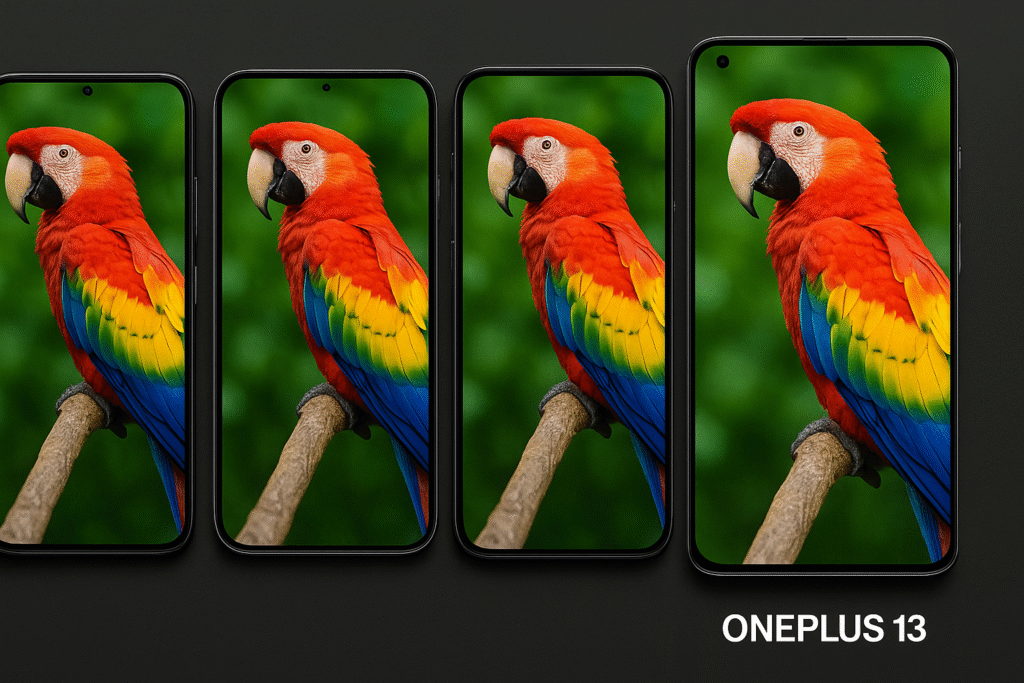
Conclusion
The OnePlus 13 combines minimalist design with premium materials and an immersive display that offers an exceptional user experience. From its sleek, simple exterior to its stunning, high-performance screen, the OnePlus 13 is a phone that delivers on both aesthetics and functionality. If you’re looking for a device that blends understated elegance with cutting-edge technology, the OnePlus 13 is a top contender.
Performance Showdown: Snapdragon Power in Both
When it comes to performance, both the Samsung S25 and the OnePlus 13 bring the power of Qualcomm’s Snapdragon processors, ensuring smooth, fast, and efficient operation for users. But which one delivers the better performance? Let’s take a closer look at the Snapdragon power in both devices and how they compare when it comes to speed, multitasking, and overall user experience.
Snapdragon Power in the Samsung S25
The Samsung S25 is equipped with the latest Snapdragon 8 Gen 2 chipset, providing excellent performance in every area. Whether you’re gaming, multitasking, or running demanding apps, this high-performance processor ensures that the phone operates smoothly. With its octa-core CPU and advanced GPU, the Snapdragon 8 Gen 2 enables faster app launches, improved graphics rendering, and seamless performance even during heavy use.
The chipset is built on a 4nm process, offering significant power efficiency, which means the Samsung S25 can handle intensive tasks while managing battery life efficiently. Whether you’re switching between apps or playing graphics-heavy games, the Snapdragon 8 Gen 2 ensures an ultra-responsive experience without any lag or stuttering.
Where to Add an Image: An image comparing benchmark scores of the Samsung S25 with the OnePlus 13 could help highlight the performance differences. A screenshot of the phone running a game or an intensive app could also show how well it handles demanding tasks.
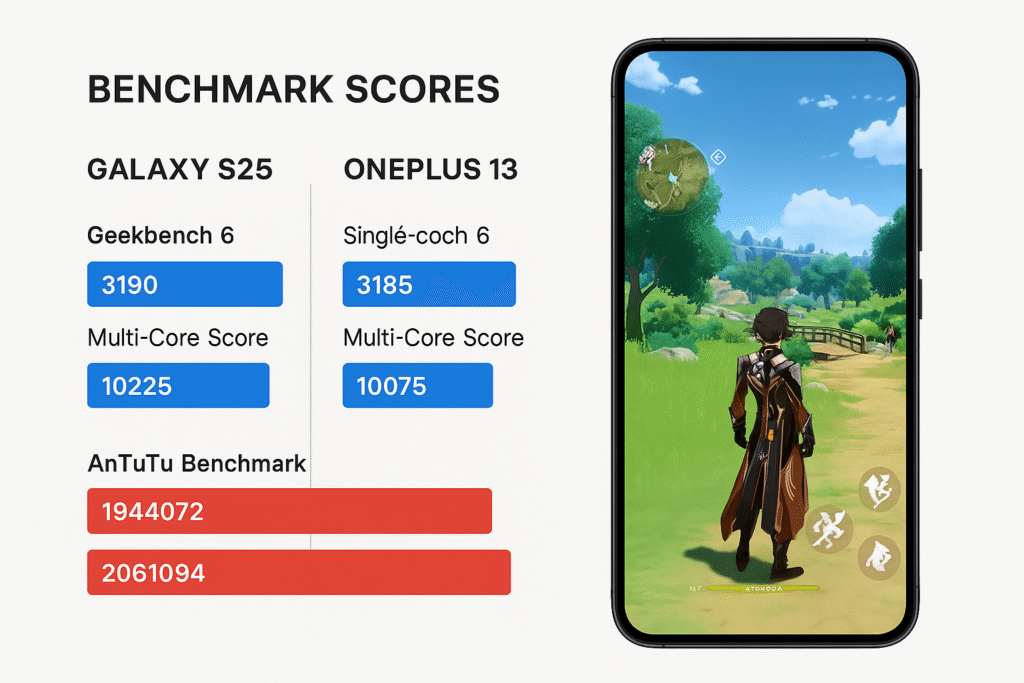
Snapdragon Power in the OnePlus 13
Similarly, the OnePlus 13 is powered by the Snapdragon 8 Gen 2 chipset, which brings the same high-level performance to this device. With its powerful CPU and GPU, the OnePlus 13 handles everyday tasks with ease, ensuring that apps launch quickly and the device remains responsive even under heavy usage. Whether you’re using social media apps, browsing the web, or playing high-performance games, the OnePlus 13 handles it all without skipping a beat.
Just like the Samsung S25, the Snapdragon 8 Gen 2 in the OnePlus 13 is built for efficiency, allowing users to enjoy top-tier performance without draining the battery excessively. The advanced architecture ensures that both light and heavy tasks are executed swiftly, making the OnePlus 13 a powerhouse for anyone who demands smooth performance throughout the day.
Performance Comparison: Which One Wins?
When it comes to pure performance, both the Samsung S25 and the OnePlus 13 excel. The Snapdragon 8 Gen 2 chipset inside both phones ensures lightning-fast speed, excellent gaming experiences, and smooth multitasking.
However, the real-world difference might come down to optimization and software experience. While both phones are optimized to work seamlessly with the Snapdragon 8 Gen 2, the OnePlus 13 might offer a slightly faster user experience due to its OxygenOS, which is known for its smoothness and responsiveness. On the other hand, Samsung’s One UI adds a layer of customization and extra features that may appeal to users who want a more feature-rich software experience.
Conclusion
Both the Samsung S25 and OnePlus 13 come equipped with the powerful Snapdragon 8 Gen 2 chipset, delivering outstanding performance for any task you throw at them. While both devices offer similar power, the real difference lies in the overall user experience, with each phone providing unique optimizations and software features. Whether you choose the Samsung S25 for its additional features or the OnePlus 13 for its streamlined experience, both devices deliver top-tier performance that ensures your smartphone can keep up with all your needs.
Samsung S25 Camera Upgrades: What’s New in 2025?
The camera is one of the most important features of a smartphone, and Samsung continues to push the envelope with each new release. The Samsung S25, launched in 2025, comes with a range of camera upgrades designed to enhance your photography experience. From improved sensors to advanced AI capabilities, these upgrades ensure that the Samsung S25 delivers professional-level photography right from your pocket. Let’s dive into what’s new with the Samsung S25’s camera setup and how it stands out from the competition.
Enhanced Main Camera: A Leap in Sensor Technology
One of the most notable upgrades in the Samsung S25 is the improved main camera sensor. The Samsung S25 features a 200MP primary camera, an upgrade from the 108MP sensor seen in previous models. This new sensor allows for incredibly sharp and detailed images, even in challenging lighting conditions. Whether you’re capturing a wide landscape or a close-up shot, the enhanced resolution ensures that every detail is crisp and clear.
In addition to the higher megapixel count, the new sensor incorporates improved pixel binning technology, which combines smaller pixels to create brighter, more vibrant images with less noise. This is especially useful in low-light situations, where the camera can now capture more light without sacrificing quality.
Ultra-Wide Camera: Broader Views, Better Quality
The Samsung S25’s ultra-wide camera also sees significant upgrades. It now features a 12MP sensor with a wider field of view, allowing you to capture more in a single shot. This upgrade is perfect for landscape photography or when you need to fit a large group of people into the frame. In addition, the sensor has been improved to provide better color accuracy and reduced distortion, especially at the edges of the frame.
The new ultra-wide camera is paired with enhanced image processing, ensuring that even in wide shots, colors remain true to life, and the details are sharp across the entire frame.
Telephoto Lens: Improved Zoom Capabilities
The Samsung S25’s telephoto lens has been enhanced with a 10MP sensor and an optical zoom of up to 10x. This means you can now capture high-quality images at a distance with greater clarity and less distortion. The upgraded zoom capabilities make the Samsung S25 ideal for wildlife, sports, or even architectural photography, where being able to zoom in without losing detail is crucial.
Samsung has also improved the stabilization technology for the telephoto lens, ensuring that even at higher zoom levels, your photos remain steady and blur-free.
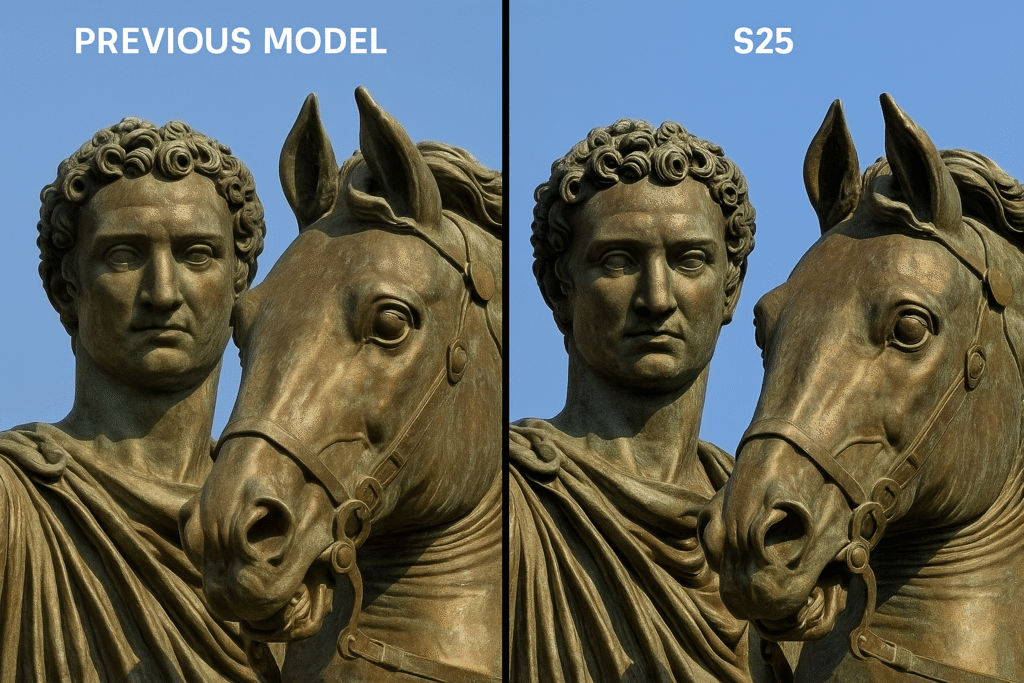
AI-Powered Features: Smarter Photography
In 2025, Samsung has integrated even more advanced AI features into the Samsung S25 camera. With improved scene recognition, the camera now automatically adjusts settings to optimize each shot based on what you’re photographing—whether it’s a portrait, landscape, food, or night scene. The AI also improves the dynamic range, ensuring that highlights and shadows are balanced in all lighting conditions.
Additionally, Samsung’s AI image processing now includes enhanced skin tone adjustment and real-time beautification tools, allowing for more natural and flattering portraits. The AI can also detect and reduce unwanted noise in low-light situations, delivering cleaner, sharper images.
Video Capabilities: 8K and Enhanced Stabilization
The Samsung S25 continues to push the boundaries of video recording, offering 8K video recording at 30fps. This makes it one of the few smartphones capable of recording ultra-high-definition video. The camera also includes enhanced video stabilization, which ensures that your videos remain smooth and steady, even in challenging conditions, such as while moving or walking.
With the addition of HDR10+ support, videos shot on the Samsung S25 have more vibrant colors and better contrast, providing a cinema-quality experience right from your phone.

Conclusion
The Samsung S25 introduces a host of exciting camera upgrades that elevate your photography and videography experience. From the massive leap in sensor technology to the enhanced AI capabilities and video features, the Samsung S25 is equipped to handle any creative endeavor. Whether you’re a casual user looking for better snapshots or a serious photographer seeking professional-grade results, the Samsung S25 delivers exceptional quality and versatility.
Incorporating images such as side-by-side camera comparisons, sample shots, and video screenshots will provide readers with a clearer visual understanding of the improvements made in the Samsung S25’s camera system
OnePlus 13 Camera Capabilities: Computational Photography at Its Best
The OnePlus 13 stands at the forefront of smartphone camera technology, combining powerful hardware with cutting-edge computational photography to deliver stunning results. In 2025, OnePlus continues to refine its camera system, focusing on AI-powered enhancements, advanced image processing, and versatile shooting options. Let’s explore the OnePlus 13’s camera capabilities and how computational photography takes it to the next level.
Advanced Main Camera: Bringing Clarity and Detail
At the heart of the OnePlus 13’s camera system is a 50MP main sensor, offering incredible clarity and detail in every shot. This sensor leverages advanced computational photography techniques, ensuring that your photos are sharp, vibrant, and well-balanced. The combination of larger pixel sizes and a fast aperture enables the camera to capture more light, especially in low-light conditions, providing brighter and more detailed photos without sacrificing quality.
Computational photography plays a key role here, using AI algorithms to adjust settings in real time, such as exposure and color balance, ensuring that each shot is perfectly optimized. Whether you’re shooting landscapes, portraits, or everyday moments, the OnePlus 13’s main camera produces high-quality images that rival professional cameras.
Ultra-Wide Camera: Expanding Your View
The OnePlus 13 features an ultra-wide camera with a 48MP sensor, which enables you to capture expansive landscapes, architecture, or large groups of people in a single shot. Thanks to the computational photography enhancements, this ultra-wide camera minimizes distortion at the edges of the frame, ensuring your photos stay sharp and true to life.
AI-powered scene detection further optimizes each shot by adjusting parameters like exposure and white balance, ensuring that the colors remain vibrant and natural, even in challenging lighting conditions.
Telephoto Lens: Sharp Details at a Distance
The OnePlus 13’s telephoto lens has received significant upgrades, now featuring a 16MP sensor and offering 3x optical zoom. This lens allows you to zoom in on distant subjects without losing detail, making it ideal for capturing wildlife, architectural features, or candid shots from a distance.
With computational photography at work, the OnePlus 13 is able to enhance the zoomed-in shots by reducing noise and increasing the sharpness of fine details. The camera’s AI algorithms also improve stability during zoomed-in shots, minimizing blurriness even in shaky conditions.
AI and Nightscape Mode: Smart Photography for Every Condition
The OnePlus 13’s AI-powered Nightscape mode is a standout feature, allowing users to capture incredible photos in low-light environments. By utilizing advanced image processing and multi-frame stacking, Nightscape mode brightens your photos while preserving important details, resulting in crisp, vibrant shots even in dim settings.
Computational photography further enhances low-light performance by reducing noise and optimizing color accuracy in challenging lighting conditions. Whether you’re snapping photos of city lights at night or shooting indoors, the OnePlus 13 ensures that your low-light photos look clear and detailed.
Portrait Mode and AI Enhancements: Stunning Bokeh and Natural Details
The OnePlus 13 also excels in portrait photography, thanks to its AI-powered portrait mode. This feature uses computational photography to create a natural bokeh effect, blurring the background while keeping your subject in sharp focus. The AI algorithms work to detect faces and fine-tune skin tones, ensuring that your portraits look lifelike and flattering.
In addition, the camera’s advanced depth sensing technology enables it to capture more detailed and accurate bokeh, with smoother transitions between the subject and background.
Video Capabilities: 8K Recording and Enhanced Stabilization
When it comes to video, the OnePlus 13 impresses with its ability to shoot 8K video at 30fps. This ultra-high-definition recording ensures that your videos are incredibly detailed, with rich colors and high contrast. Computational photography plays a role here by enhancing video stabilization, ensuring smooth and steady footage even while moving.
In addition, the OnePlus 13 supports HDR10+ video, providing enhanced dynamic range for brighter highlights and deeper shadows, creating a more cinematic video experience.
The OnePlus 13 takes computational photography to the next level with its impressive camera capabilities. From the AI-powered main and ultra-wide cameras to the enhanced telephoto lens and Nightscape mode, the OnePlus 13 is designed to provide stunning images and videos in any condition. With its focus on intelligent processing, the OnePlus 13 delivers professional-quality photography that’s easy for anyone to use.
Software and Ecosystem: One UI vs OxygenOS
When choosing a smartphone, the software experience can make a significant difference in how you interact with your device on a daily basis. Both Samsung and OnePlus offer unique software experiences—Samsung’s One UI and OnePlus’s OxygenOS—each designed to provide a user-friendly and feature-rich interface. In this comparison, we’ll explore the strengths and differences between One UI vs OxygenOS, helping you determine which software ecosystem is best suited for your needs.
One UI: Samsung’s Custom Experience
Samsung’s One UI has evolved significantly over the years and is one of the most feature-packed custom Android skins available today. Designed to provide a user-friendly and intuitive experience, One UI offers a more polished, feature-rich interface compared to standard Android. One of its standout features is the design, which emphasizes one-handed usability. One UI uses a design language that shifts the most important UI elements (such as app icons and navigation buttons) towards the bottom of the screen, making it easier to reach them with one hand.
Additionally, One UI offers a variety of customization options. Users can adjust themes, icon packs, and even the look of their Always-On Display. Samsung also includes a wide range of productivity tools, such as Samsung DeX, which allows you to connect your phone to a monitor for a desktop-like experience, and Samsung Flow, which helps you sync and transfer files between different Samsung devices seamlessly.
Another area where One UI shines is in its integration with Samsung’s broader ecosystem. Whether you own a Galaxy Tab, Galaxy Watch, or Galaxy Buds, One UI is designed to provide a seamless experience across these devices, allowing for easy syncing and cross-platform functionality. This makes One UI ideal for users who are already invested in the Samsung ecosystem.
OxygenOS: Streamlined and Speed-Focused
OxygenOS, the custom Android skin developed by OnePlus, is known for its simplicity and clean design. One of the core philosophies behind OxygenOS is to keep the Android experience as close to stock as possible while adding subtle enhancements for a more fluid and efficient user experience. The result is a fast, clean interface with minimal bloatware, making it a favorite among users who prefer a more straightforward Android experience without unnecessary features.
OxygenOS also stands out for its speed and performance. OnePlus has optimized OxygenOS to run smoothly on its devices, with fast app launches, responsive navigation, and efficient multitasking. The OxygenOS experience includes a range of gestures and shortcuts that allow users to navigate quickly and efficiently, including the ability to switch between apps with a simple swipe or access specific features using customizable gestures.
The software experience is also enhanced by OxygenOS’s customization options, such as the ability to tweak themes, customize the status bar, and adjust the system font. OnePlus is also known for its fast updates, with the brand typically rolling out Android updates faster than many other manufacturers, including Samsung.
In terms of ecosystem, OxygenOS is optimized for seamless integration with OnePlus devices, but it doesn’t offer the same level of cross-device compatibility as One UI. However, OnePlus has been making strides with features like OnePlus Connect, which allows easy synchronization with PCs and smart TVs within the OnePlus ecosystem.
One UI vs OxygenOS: Key Differences
While both One UI and OxygenOS offer rich Android experiences, there are some key differences to consider:
- Customization: One UI offers more in-depth customization, especially with the integration of Samsung’s ecosystem, including features like Samsung DeX and advanced camera settings. OxygenOS, on the other hand, is more about subtle, easy-to-use tweaks that keep the Android experience relatively close to stock.
- Design: One UI’s design focuses on one-handed use and large screen optimization, with UI elements shifted toward the bottom of the display. OxygenOS keeps a cleaner, more minimalistic design, favoring simple navigation and fewer on-screen elements.
- Performance and Speed: OxygenOS is known for its smooth, lag-free performance, often offering faster updates than One UI. One UI offers more advanced features, but these can sometimes come at the cost of a slightly heavier interface. OnePlus devices, thanks to their lightweight OxygenOS, tend to feel snappier.
- Ecosystem Integration: Samsung’s One UI offers deeper integration with a wider array of devices, such as tablets, smartwatches, and even appliances. OnePlus is still building its ecosystem, with OxygenOS mostly centered around OnePlus phones, though it does offer integration with smart TVs and other OnePlus products.
- Updates: OnePlus is known for its faster Android updates, often delivering new features and security patches quicker than Samsung. While One UI is regularly updated, the pace can sometimes lag behind, especially in terms of the latest Android version.
Conclusion
Both One UI vs OxygenOS provide excellent user experiences, but they cater to different types of users. One UI is best for those who want a feature-packed, customizable interface with deep integration into the Samsung ecosystem. It’s ideal for users who enjoy having a broad range of tools and productivity features at their fingertips.
On the other hand, OxygenOS offers a sleek, fast, and minimalistic approach to Android, perfect for users who prefer a clean, responsive interface with subtle enhancements. OnePlus fans and those who prefer a stock-like Android experience will likely appreciate OxygenOS.
Ultimately, the choice between One UI and OxygenOS depends on your preferences for customization, performance, and ecosystem integration.
Battery Life and Charging: Who Lasts Longer?
When choosing between two flagship smartphones like the Samsung S25 and OnePlus 13, one of the most crucial factors to consider is battery life. How long will the phone last on a single charge? And how fast can it recharge when the battery is running low? In this section, we’ll compare the battery life and charging capabilities of the Samsung S25 and OnePlus 13, to help you decide which one provides the best longevity and convenience for your needs.
Samsung S25 Battery Life: All-Day Power with Smart Management
The Samsung S25 is equipped with a 5000mAh battery, a size that is standard for flagship phones in 2025. This battery size, combined with Samsung’s advanced One UI power management, ensures that the S25 can easily get through a full day of typical use—whether it’s browsing the web, using apps, streaming videos, or playing games.
Samsung has also included several power-saving features in the One UI software, such as adaptive battery management, which learns your usage habits and adjusts power consumption accordingly. This helps the S25 manage power more efficiently, providing extended battery life without compromising performance.
With 5G support, the Samsung S25 offers excellent battery optimization when connected to 5G networks, making it ideal for users who rely on high-speed internet on the go.
OnePlus 13 Battery Life: Efficiency and Speed
The OnePlus 13 is also equipped with a 5000mAh battery, so the battery size is on par with the Samsung S25. However, OnePlus takes a different approach when it comes to power efficiency. Thanks to OxygenOS optimizations, the OnePlus 13 is known for its ability to stretch battery life, making it last longer during intensive tasks like gaming or video streaming. OnePlus’s software is highly streamlined and free of unnecessary background processes, which ensures that the device runs efficiently without draining the battery unnecessarily.
Additionally, OnePlus incorporates a feature called Battery Health Engine, which helps optimize battery charging cycles to maintain long-term battery health. This feature is particularly beneficial for users who plan to keep their phone for an extended period.
In terms of screen-on time, the OnePlus 13 is highly efficient, and many users report that they can easily get through a full day of use with moderate to heavy activity, just like the Samsung S25.
Charging Speed: Who Gets Back to 100% Faster?
When it comes to charging, both the Samsung S25 and OnePlus 13 offer fast charging capabilities, but there are some differences in terms of charging speed.
Samsung S25 Charging Speed
The Samsung S25 supports 45W fast charging, allowing it to charge from 0 to 50% in around 30 minutes. However, when it comes to charging the battery fully, the process takes longer, generally around 1 hour and 15 minutes, depending on usage during charging. In addition to wired charging, the Samsung S25 supports 15W wireless charging, which is convenient but slower compared to wired charging.
Samsung’s Wireless PowerShare feature allows you to charge other devices, such as Galaxy Buds or even other phones, using your S25, though this can be slower and uses more battery.
OnePlus 13 Charging Speed
The OnePlus 13 shines in the charging department with its 100W Warp Charge technology, which allows the phone to charge from 0 to 50% in just about 10 minutes. A full charge takes around 25-30 minutes, which is incredibly fast compared to the Samsung S25.
OnePlus has also introduced Warp Charge wireless technology that supports speeds up to 50W. While wireless charging is slower than wired charging, it still offers impressive speed compared to most other smartphones in its class.
The OnePlus 13 also supports reverse wireless charging, allowing you to charge accessories or other devices, though the power output is typically lower than with the Samsung S25’s Wireless PowerShare.
Where to Add an Image: A comparison chart showing the charging times for both devices from 0% to 100% for both wired and wireless charging would give a clear visual of how much faster the OnePlus 13 charges compared to the Samsung S25.
Battery Life and Charging Comparison: Which One Lasts Longer?
- Battery Life: Both the Samsung S25 and OnePlus 13 come with a 5000mAh battery, offering all-day battery life under normal use. However, OnePlus’s efficient OxygenOS software tends to give the OnePlus 13 an edge in terms of longevity, making it slightly better in terms of endurance during intensive tasks.
- Charging Speed: When it comes to charging, the OnePlus 13 is the clear winner with its 100W Warp Charge, allowing for extremely fast recharging times. In contrast, the Samsung S25 supports 45W charging, which is slower by comparison. The OnePlus 13 also offers 50W wireless charging, a feature not yet available on the Samsung S25.
Conclusion
Both the Samsung S25 and OnePlus 13 offer solid battery life and efficient charging capabilities, but they cater to different preferences. If you prioritize fast charging, the OnePlus 13 is the clear winner with its 100W Warp Charge technology, which gets you from 0 to 100% in record time. For those who value battery longevity and power management, the OnePlus 13’s efficient software and battery optimization offer impressive results.
On the other hand, the Samsung S25 offers reliable battery life, with a 45W fast-charging speed that’s adequate for most users. If you’re already invested in the Samsung ecosystem, the added Wireless PowerShare feature and integration with other Samsung devices could be a deciding factor
Samsung S25 Price and Availability
When considering a new smartphone, price and availability are essential factors that can influence your decision. The Samsung S25, as one of the latest flagship models from Samsung, offers advanced features and a premium experience. But how much does it cost, and where can you buy it? In this section, we’ll break down the Samsung S25 price and availability across different regions, as well as where you can purchase it.
Samsung S25 Price: What to Expect
The Samsung S25 is a high-end device designed to provide top-tier performance, premium build quality, and cutting-edge technology. As such, it is priced accordingly, making it more expensive than mid-range smartphones but competitive with other flagship devices in the market.
Here’s an overview of the expected price range for the Samsung S25 based on storage configurations:
- Samsung S25 128GB: $999
- Samsung S25 256GB: $1,099
- Samsung S25 512GB: $1,199
These prices reflect the base pricing in the United States and may vary slightly depending on ongoing promotions, trade-in offers, or regional pricing adjustments. The Samsung S25 often comes with carrier deals and payment plans that allow for more affordable monthly installments. Additionally, Samsung frequently offers bundle deals, where you can get discounts on accessories such as wireless earbuds or a smartwatch when purchasing the device.
Samsung S25 Availability: Where to Buy
The Samsung S25 is widely available across various regions and can be purchased through multiple channels, both online and in physical stores. Here’s a look at where you can find the Samsung S25:
1. Samsung Official Website
The most direct way to purchase the Samsung S25 is through Samsung’s official website. Samsung often provides exclusive deals, such as early access to pre-orders, discounts on accessories, and trade-in programs to lower the upfront cost of the device. Samsung’s website also allows you to customize your device, including selecting storage options and adding accessories.
2. Major Retailers
You can also find the Samsung S25 at leading electronics and retail stores, including:
- Best Buy
- Target
- Walmart
These retailers often carry the Samsung S25, and you may be able to find it available for in-store pickup or delivery. Many of these stores also offer price-matching policies, which can help you find the best deal available.
3. Carrier Stores
If you prefer to purchase the Samsung S25 through your mobile carrier, it’s available at:
- Verizon
- AT&T
- T-Mobile
Carrier stores offer financing plans, often making it easier to purchase the phone with a contract or monthly payments. Additionally, many carriers run promotions, offering discounts or perks like free accessories when you sign up for a new contract or trade in your old device.
4. Online Marketplaces
For those who prefer shopping online, you can find the Samsung S25 through third-party retailers and marketplaces such as:
- Amazon
- eBay
- B&H Photo Video
These platforms may offer competitive pricing and various seller options, sometimes with discounts or bundled packages.
Regional Availability
While the Samsung S25 is expected to be available globally, there may be some variations in availability depending on the region. In the United States, Europe, and Asia, the Samsung S25 will be widely available through official channels and local retailers.
In regions like Africa or Latin America, the availability might be more limited initially, but Samsung typically ensures that flagship devices like the S25 eventually make their way to most global markets.
The Samsung S25 is available at a premium price, reflecting its advanced technology and flagship status. Whether you choose to purchase directly from Samsung, through a major retailer, or via a carrier store, there are multiple options to find the Samsung S25 at a price point that fits your budget. Be sure to check for promotions, trade-in offers, or payment plans that can help make the purchase more affordable.
By understanding the pricing structure and availability options, you can make an informed decision and get your hands on the Samsung S25 with ease.
OnePlus 13 Price and Global Launch Details
When it comes to flagship smartphones, price and availability are two key factors that can influence purchasing decisions. The OnePlus 13, a highly anticipated device in the OnePlus lineup, offers an array of premium features at a competitive price point. In this section, we’ll explore the OnePlus 13 price and global launch details, so you can get all the essential information about when and where to purchase the device.
OnePlus 13 Price: What to Expect
The OnePlus 13 comes in several configurations, with different storage and RAM options to suit varying user needs. The price is reflective of its flagship status, offering high-end specifications, great performance, and a clean design. Here’s an overview of the expected pricing for the OnePlus 13 based on storage and RAM variants:
- OnePlus 13 128GB (8GB RAM): $799
- OnePlus 13 256GB (12GB RAM): $899
- OnePlus 13 512GB (16GB RAM): $999
These prices reflect the standard retail pricing in the United States. The OnePlus 13 will likely be available at slightly different prices in various regions, with fluctuations depending on local taxes and import duties.
The OnePlus 13 is generally priced lower than other flagship devices from companies like Samsung and Apple, which makes it an appealing choice for those looking for premium features at a more affordable price.
Additionally, OnePlus 13 buyers will likely find launch discounts, trade-in offers, and bundle deals available through official sales channels, including the OnePlus website, major retailers, and carriers.
OnePlus 13 Global Launch: When and Where to Buy
The OnePlus 13 is set to launch globally, and OnePlus will follow its usual pattern of releasing the phone across multiple regions. The global launch date for the OnePlus 13 is scheduled for May 2025, with pre-orders starting a few days prior to the official release. Here’s a breakdown of the launch details:
1. United States
The OnePlus 13 will be available for purchase starting in May 2025, both through the OnePlus official website and various carrier partners. The OnePlus 13 will likely be offered through Verizon, T-Mobile, and AT&T, with financing options and contract deals available.
2. Europe
In Europe, the OnePlus 13 will be available in major markets such as the UK, Germany, France, and Italy starting in late May 2025. European customers can buy the phone directly from the OnePlus website or from major retailers like Amazon and MediaMarkt.
3. Asia
The OnePlus 13 will launch in key Asian markets, including India, China, and Japan, around the same time. India is a crucial market for OnePlus, and the phone will be widely available through Amazon India, OnePlus Experience Stores, and various offline retailers.
4. Other Regions
While the launch will initially focus on the major markets mentioned above, OnePlus usually expands availability to other regions like Africa, Middle East, and Latin America within the months following the initial release. The exact availability and timing may vary depending on local demand and logistics.
Where to Buy the OnePlus 13
The OnePlus 13 will be available through multiple purchasing channels, ensuring that buyers have plenty of options to get their hands on the device:
- OnePlus Official Website: The official website will be the best place to buy the OnePlus 13, offering exclusive deals, pre-order bonuses, and trade-in options for upgrading from an older device. OnePlus often offers free shipping and special accessories or discounts for early buyers.
- Major Retailers: The OnePlus 13 will also be available at major electronics and retail stores, such as:
- Amazon
- Best Buy
- Target
These retailers often offer in-store pickup and a wider selection of carrier plans, which can be a convenient option for those looking to upgrade their mobile plan simultaneously.
- Carrier Stores: If you prefer to get the phone with a carrier contract or payment plan, the OnePlus 13 will be available at various carrier stores across the U.S. and Europe. T-Mobile, Verizon, and AT&T in the U.S., as well as carriers like Vodafone and Orange in Europe, will likely carry the device.
- Online Marketplaces: In addition to OnePlus’s official website, Amazon, eBay, and other online marketplaces will offer the OnePlus 13, potentially at competitive prices or with bundled promotions.
The OnePlus 13 is set to be an exciting launch for smartphone enthusiasts, with competitive pricing and availability across multiple regions. Starting at $799 for the base model, it provides a premium experience at a more affordable price compared to many other flagship devices. Whether you purchase through OnePlus’s website, a major retailer, or a carrier, there are plenty of options to get your hands on the device when it launches globally in May 2025.
With its availability expanding worldwide, the OnePlus 13 is sure to be a popular choice for users seeking top-tier performance at a more accessible price point. Keep an eye out for pre-order deals and launch offers to get the best value when purchasing the device.
Including price comparison graphics, global availability maps, and screenshots of promotional offers can further help readers understand when and where they can purchase the OnePlus 13 in their region. Additionally, a pre-order countdown image or promotional banners from OnePlus’s website can generate excitement around the device’s launch.
Final Verdict: Should You Buy the Samsung S25 or OnePlus 13?
After thoroughly comparing the Samsung S25 and OnePlus 13 across various categories like design, performance, camera capabilities, battery life, and pricing, the final decision comes down to what you value most in a smartphone. Both devices are flagship-level phones, offering cutting-edge technology and an exceptional user experience, but each has its own strengths that might appeal to different users. In this final verdict, we’ll break down the factors to consider when deciding whether the Samsung S25 or OnePlus 13 is the right choice for you.
Performance and Speed: Samsung S25 vs. OnePlus 13
Both the Samsung S25 and OnePlus 13 are powered by the latest Snapdragon 8 Gen 3 chipset, ensuring smooth performance whether you’re gaming, multitasking, or using demanding applications.
- The OnePlus 13 stands out with its OxygenOS, known for its speed and clean interface, making it ideal for users who prefer a minimalist software experience.
- The Samsung S25, on the other hand, offers One UI, which provides more features and customization options, though it may be slightly more resource-intensive than OxygenOS.
Verdict: If you want a phone that is fast, smooth, and lightweight with an emphasis on a clean interface, the OnePlus 13 is your best bet. But if you prefer a feature-rich experience with Samsung’s software ecosystem, the Samsung S25 would be a great choice.
Camera Capabilities: Which One Delivers Better Photos?
- The Samsung S25 features a 108MP main sensor, a versatile camera system, and improved low-light performance thanks to the new sensors and AI enhancements.
- The OnePlus 13 focuses on computational photography with its 50MP main sensor, delivering high-quality images with impressive color accuracy and HDR performance, especially in challenging lighting conditions.
Verdict: If you’re looking for a more traditional flagship camera experience with higher megapixel counts and extensive camera features, the Samsung S25 is the way to go. If computational photography and AI-driven enhancements are more important to you, the OnePlus 13 excels in providing stunning photos with a more natural look.
Battery Life and Charging: Which One Lasts Longer?
Both devices come equipped with a 5000mAh battery, ensuring that you can easily get through a full day of use. However, there are key differences in charging speed:
- The OnePlus 13 takes the lead with its 100W Warp Charge, allowing for incredibly fast charging, going from 0% to 100% in about 25 minutes.
- The Samsung S25, while still offering 45W fast charging, charges slower compared to the OnePlus 13, but it does offer Wireless PowerShare, which is useful for charging other devices.
Verdict: If you prioritize fast charging and minimal downtime, the OnePlus 13 should be your choice. If you’re looking for a more balanced approach with wireless charging capabilities, the Samsung S25 might be better for you.
Price and Value: Which One Offers More Bang for Your Buck?
- The Samsung S25 starts at a higher price point, typically around $999 for the base model, reflecting its premium features and brand reputation.
- The OnePlus 13, priced starting at $799, offers a competitive value for the premium features it provides, especially considering its fast charging and overall performance.
Verdict: If you’re looking for the best value for your money while still getting a flagship experience, the OnePlus 13 offers a more affordable price point without sacrificing performance. However, if you prefer the Samsung ecosystem and are willing to pay more for a broader range of features and advanced technology, the Samsung S25 is a worthy investment.
Final Verdict: Samsung S25 or OnePlus 13?
The decision to buy the Samsung S25 or OnePlus 13 ultimately depends on your priorities. Here’s a quick recap:
- Choose the Samsung S25 if you prefer a feature-packed phone, advanced camera system, and integration with the Samsung ecosystem, including wireless charging and PowerShare.
- Choose the OnePlus 13 if you want fast charging, a clean software experience, and an affordable price, without sacrificing flagship-level performance.
Both phones are top-tier devices, and you can’t go wrong with either choice. It all comes down to your specific needs and preferences.
articles of other websites
if you need further explanation contact us
read more posts by blog page

